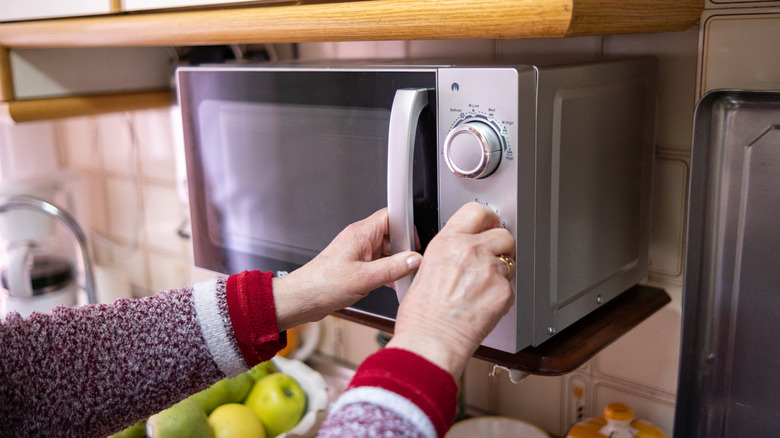Are Most Microwaves Really Made By The Same Company?
The microwave market is filled with endless options. You'll find models from Toshiba, Black+Decker, Insignia, GE, Whirlpool, and even store brands like RCA or Avanti. But what most people don't realize is that many of the best microwaves from the top brands come from the same source. A huge number of microwaves sold in the U.S. are actually made by Midea. The company's wide reach means that even if you think you're choosing between brands, you may really just be choosing between variations of the same machine.
Based in Guangdong, China, Midea is the world's largest manufacturer of home appliances. It produces millions of microwaves every year, and a good chunk of them are rebranded and sold under other popular names. So, whether you're buying a basic Toshiba model at Walmart or a Black+Decker microwave from Amazon, chances are it was built in the same factory, using nearly identical internal parts. Aside from minor design tweaks like buttons, colors, or handles, the microwaves are often the same inside, right down to the vents and wiring.
Most microwaves in stores come from just a handful of manufacturers
Midea doesn't just make its own products; it's an OEM, or Original Equipment Manufacturer. That means it builds appliances for other companies, who then slap their branding on it. Brands like GE, Whirlpool, Toshiba, Insignia, Breville, and Sharp all sell microwaves made by Midea. But Midea has a competition as well. Another big player in the space is Galanz, which manufactures microwaves for RCA, Avanti, and several smaller labels across retail chains. These two companies dominate the space, quietly powering the majority of budget-friendly models found in American kitchens.
This is also why so many microwaves look strikingly similar. Consumer testing has shown that the internal components, like the magnetrons and capacitors, are often exactly the same across different brands. Even the back panels, vents, and layouts match up, almost like they were built from a single template. So basically, what you're really choosing, in many cases, is the logo, price tag, and a few cosmetic features, and not a fundamentally different machine.
Why the brands rely on Midea?
Midea's dominance is largely due to economies of scale. By producing massive quantities of microwaves, it can cut down on costs and offer better pricing. This makes it appealing for companies that want to offer budget appliances without building factories of their own. Instead of investing millions into manufacturing, these brands simply outsource to Midea and focus on marketing, distribution, and support.
For consumers, this has an upside, as they get microwaves at an affordable price. Most microwaves under $100 perform about the same, regardless of the logo. However, it also means that brand loyalty may not get you a better product. Whether you go with a name-brand or a lesser-known one, you might just be buying the same core machine.
While the microwaves and other appliances from Samsung, LG, and Panasonic are still independently made, they're the exception, not the rule. Even luxury brands have been known to rely on Midea-made parts. So on your next microwave purchase, if they all look the same and cost the same, that's because they're probably the same — no matter what the brand says.


